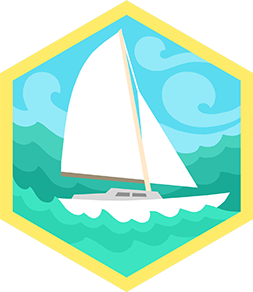Join a club
Join or start a small club with friends, choose a theme, plan meetings, create rules and posters, and organize a fun first activity.



Step-by-step guide to join or start a small club
Tips on Starting/Running a Club at Your School
Step 1
Decide whether you want to join an existing club or start a new club.
Step 2
Choose a fun theme for your club like art explorers book buddies science club or nature detectives.
Step 3
Write down the names of three friends or classmates you want to invite.
Step 4
Pick a day and time for your meetings and write it in your notebook.
Step 5
Make three simple club rules that everyone can follow.
Step 6
Create a bright poster that shows your club name meeting time place and the three rules.
Step 7
Choose one easy first activity or game for your meeting such as a craft a short game or a story time.
Step 8
Gather the supplies you need for the first activity and put them on a table.
Step 9
Give your poster or a quick invite to each friend to ask them to join the meeting.
Step 10
Arrange the meeting space by setting chairs a table and placing the activity supplies where everyone can reach them.
Step 11
Practice the first activity once by yourself so you know the steps.
Step 12
Welcome everyone to the first meeting with a big smile.
Step 13
Read the three club rules aloud so everyone understands them.
Step 14
Lead the first activity and help friends have fun and stay safe.
Step 15
Share your club poster photos and a short description of your first meeting on DIY.org.
Final steps
You're almost there! Complete all the steps, bring your creation to life, post it, and conquer the challenge!


Help!?
What can we use if we don't have poster board or special craft supplies for the bright poster and first activity?
Use a large sheet of printer paper or taped-together cereal-box cardboard for the bright poster and replace special craft supplies with recyclables like toilet-paper rolls, magazine cutouts, string, and markers placed on the table as the activity supplies.
What should we do if the meeting setup or first activity doesn't go as planned?
If chairs, table, or supplies aren't ready or the activity is tricky, rearrange a smaller space so everyone can reach the supplies, have a simple backup game ready, and remember you already practiced the first activity once by yourself so you can calmly lead adjustments.
How can we change the club plan for different age groups?
For younger kids choose an easy theme (like story time), make very short three rules, pick a short craft and place supplies within reach, while older kids can do longer science projects, write detailed meeting notes, and take turns leading activities.
What are some ways to make the club more fun or lasting after the first meeting?
Personalize the bright poster with a club logo and photos, create simple name badges, rotate who leads each meeting, keep a notebook of meeting dates and ideas, and Share your club poster photos and a short description of your first meeting on DIY.org.
Watch videos on how to join or start a small club
5 Reasons to Join a High School Club
Facts about club leadership and teamwork for kids
🎨 Colorful posters became wildly popular in the 1800s after color lithography made eye-catching prints affordable.
🎓 Kids involved in clubs and extracurriculars often develop teamwork and leadership skills that help in school and life.
🏕️ Scouting began in 1907 when Robert Baden-Powell organized the first experimental camp on Brownsea Island.
🗓️ Short, regular meetings (about 30–60 minutes) help clubs keep momentum and stay fun without taking over your week.
🤝 Small clubs of 5–10 friends are perfect for trying big ideas—everyone gets a turn to lead and share projects.
How do I start or join a small club with friends?
What materials do I need to start a kids' club?
What ages is a small club suitable for?
What are the benefits and safety tips for a children's club?


One subscription, many ways to play and learn.
Only $6.99 after trial. No credit card required


